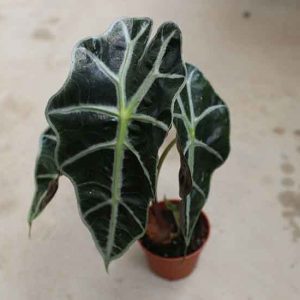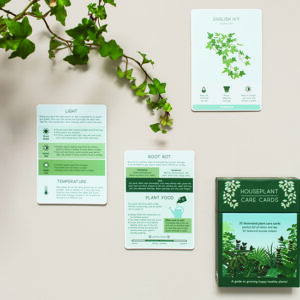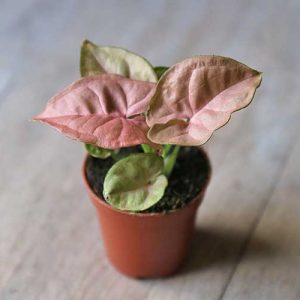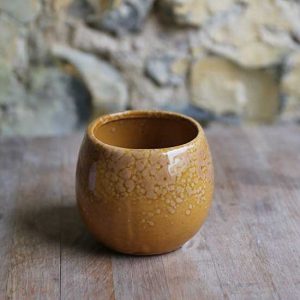HOW TO CARE FOR YOUR ALOCASIA (AFRICAN MASK / ELEPHANT EAR PLANT)
THE ALOCASIA
Alocasia genus AKA. African Mask Plant / Elephant Ears / Stingray Plant / Kris Plant
The beauty of being the proud owner of a healthy alocasia plant is the sheer weirdness of the foliage. Each of the specimens that fall under the alocasia umbrella are widely loved for their exotic-looking leaves which give rise to the stunning array of specimen-specific nicknames for these plants based on the variety of their shapes. The plant has also been extensively hybridised, meaning there are now well over 70 recognised varieties to choose from.
Now, if we’re being honest with each other, alocasia plants can be quite picky so might not be the right fit for a houseplant beginner. If you love on them too much they can wither quite quickly and they certainly don’t tolerate being neglected. That being said, if you’re ready for a new botanical challenge, these plants and their wacky foliage can make it more than worth your while.
Where Does It Come From?
A tropical genus, alocasia plants are native to southeast Asia and Australia. Since being catalogued and transported around the world by European explorers in the colonial era, these exotic plants have since been naturalised in other warm climates such as South America and the Caribbean.
Why Should I Get One?
- The foliage. The versatility. The sheer exoticism of the subspecies. The alocasia make up for being somewhat picky by being abundant with lush and unusual leaves. If you treat them right, these stunning houseplants and greedy growers can bring you a lot of joy.
- To impress your mates.
How Big Can It Grow?
Alocasia plants come in a huge range of varieties, each of which can grow to varying sizes. In non-tropical climates the plants can only survive indoors and grow to a fraction of the size that is possible in the wild or in specialised greenhouses. In the warmer summer months, you can expect to see new leaves growing on the plants every week or so, whilst during the winter, alocasia plants tend to go dormant and grow very little. Growing most successfully in larger pots, various subspecies of alocasia can reach around 2-feet high on average.
Where Should I Keep It?
The ideal positioning for an alocasia plant depends on the specific variety. As a tropical plant, whilst all varieties enjoy heat and moisture, some subspecies native to the jungle floor thrive in full shade, when others prefer quite bright sunlight. As the leaves are the centrepiece of the plant, it’s best to avoid placing the planter in magnified direct sunlight, as this can cause the leaves to shrivel or scorch. For varieties with intricate foliage details, such as silvery veins; bright but indirect sunlight tends to bring out the best in these attractive features.
Environment-wise, it can be tricky to closely replicate the kind of conditions that alocasia plants thrive in. Conservatories and other brightly lit living spaces with plenty of sunshine can work well to ensure that the plants remain consistently cosy as maintaining the ambient temperature above 15°C is vital. Beyond that, pebble-filled water trays can be used below the planter to try and recreate the humidity of a tropical forest. Keep out of the way of any cold air currents and you will give your plant the best chance at going the distance.
The leaves of most alocasia subspecies are toxic to both animals and humans, so these plants should be kept out of the way of pets and children in the home.
How Often Should I Water It?
Native to sunny, tropical climes, the alocasia naturally enjoys high moisture and humidity. They respond well to a regular watering schedule, where little and often is often the ticket as they are susceptible to root-rot and other conditions associated with overly soggy soil. If your indoor space has quite dry air and you’re struggling to provide adequate humidity for the plant, a daily misting with tepid water can help to keep the plant healthy. A greedy grower, alocasia plants appreciate a regular dose of liquid fertiliser during the summer months when their growth is at its height. If your alocasia enters a dormant stage during the winter, continue to care for it as you would a growing plant, just stripping back the watering a little to avoid root-rot.
With a striking range of leaf colours and shapes to choose from, any alocasia variety can be a valuable addition to your houseplant family. Make sure to seek specific advice for your exact variety if needs be, but on the whole by following the care guide above, you should be able to enjoy these pretty plants for the long-haul.
-
Quick View
Baby Elephant Ear Plant (Alocasia ‘Curly Bambino’)
Baby House Plants, Mini Terrarium Plants, View All £7.00 -
Quick View
-
Quick View
Miniature Arrowhead (Syngonium ‘Neon’) in Pink
View All, Mini Terrarium Plants, Baby House Plants £5.80 -
Quick View
YERBA – Small Round Ceramic Plant Pot (6.5cm)
Lifestyle: Gifts, Kits & More, Plant Pots, View All £6.00




